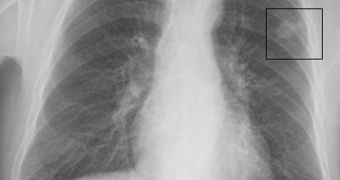In many forms of cancer – one of the fastest-spreading diseases in the world today –, detecting the conditions as early on as possible is the only chance the patient has of ever getting better. In reality, only a small portion of the people suffering from the disease is not identified too late, and doctors can only ensure that it suffers as little as possible. In order to curb this tendency, experts at the University of Toronto, in Canada, have devised a new microchip able to detect cancer.
Additionally, the instrument is also able to specify the type and severity of the condition, so doctors can get on with medicating or otherwise treating the patients as soon as possible. “This remarkable innovation is an indication that the age of nanomedicine is dawning. Thanks to the breadth of expertise here at U T, cross-disciplinary collaborations of this nature make such landmark advances possible,” the UT President and Professor of Medicine, David Naylor, says of the new microchip. Details of the detection method appear in the September 27 issue of the respected journal Nature Nanotechnology.
An analysis conducted with the UT device can be completed in only 30 minutes. The microchip works by detecting biomarkers, molecules that are specific to certain types of cancer. Even though the markers are present in only trace amounts, at extremely small concentrations, the receptors on the chip are sufficiently sensitive to pick them up, identify them, and then signal their finds to the doctors. “Today, it takes a room filled with computers to evaluate a clinically relevant sample of cancer biomarkers and the results aren't quickly available,” study co-author and lead investigator Shana Kelly, who is a UT Leslie Dan Faculty of Pharmacy and Faculty of Medicine professor, explains.
“Our team was able to measure biomolecules on an electronic chip the size of your fingertip and analyze the sample within half an hour. The instrumentation required for this analysis can be contained within a unit the size of a BlackBerry,” she adds. “Uniting DNA – the molecule of life – with speedy, miniaturized electronic chips is an example of cross-disciplinary convergence. By working with outstanding researchers in nanomaterials, pharmaceutical sciences, and electrical engineering, we were able to demonstrate that controlled integration of nanomaterials provides a major advantage in disease detection and analysis,” UT Canada Research Chair in Nanotechnology Engineering Professor Ted Sargent concludes.

 14 DAY TRIAL //
14 DAY TRIAL //